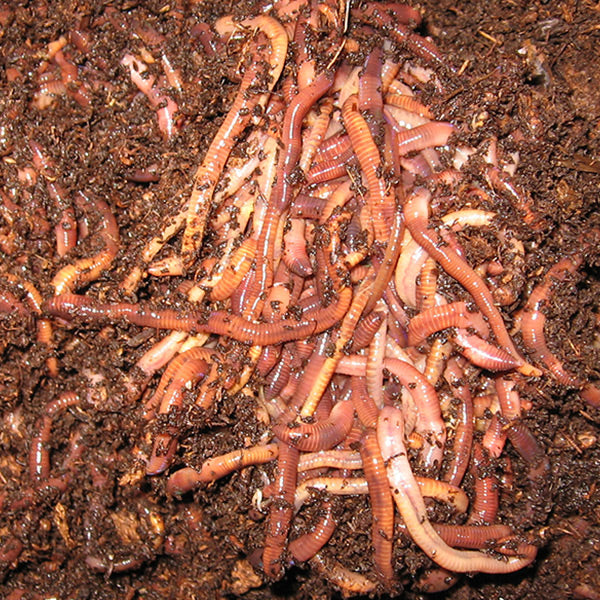9 Easy Facts About Red Wiggler Express Explained
9 Easy Facts About Red Wiggler Express Explained
Blog Article
Some Known Details About Red Wiggler Express
Table of Contents9 Easy Facts About Red Wiggler Express DescribedThe 9-Minute Rule for Red Wiggler ExpressRed Wiggler Express Things To Know Before You BuyThe Of Red Wiggler ExpressThe 8-Minute Rule for Red Wiggler Express
And the growing Red Worm population? Even in the stack that was established up directly in front of backyard composters with existing Red Worm nests.
Many ranges, consisting of Red Wigglers, European Nightcrawlers, and Lumbricus types were brought over from the European continent. Yet here's the thingNative or not - and as gifted as they go to being able to make it through in a wide-range of settings and problems -. Simply put, they are far much more likely to socialize in any kind of energetic composting systems you have established, than they are to wander off and begin messing up the atmosphere.
Origins call for oxygen for respiration and count on smooth airflow within the soil to flourish. When it rains, soil can end up being saturated with water, minimizing the oxygen offered and preventing nutrition absorption. To keep an ideal equilibrium, the soil needs to enable water to drain pipes adequately, leaving adequate room for air to sustain origin health and wellness
The 5-Second Trick For Red Wiggler Express

When it pertains to worms for composting, what comes to mind? If you were an earthworm breeder, dealership, or simple gardener, then you would certainly know that red wiggler worms are the suitable worms for vermicomposting. To get more information regarding these planet wonders, reviewed through a few of the red worm truths listed below.
(https://republic.com/@red-wiggler-express)If they extend their bodies, you'll be able to see the red stripes on their skin. When elevating worms such as red wiggler worms, you should be able to understand how to make good use of them. When you're able to maintain and care for their environment well, and also feed them the right kinds of organic wastes, then they'll be able to generate nutrient-packed and quality-rich worm spreadings for you (additionally referred to as worm poop or garden compost).
Red Wiggler Express Things To Know Before You Buy
What do worms consume? Well, these red wriggler worms can be fed with kitchen area scraps and garden wastes. So, any worn out natural stuff will certainly simulate vegetable and fruit peels, smashed egg coverings, used tea bags, coffee premises, lawn cuttings, dry fallen leaves, and others. Make sure not to feed them foods that are oily, citrusy, or has meat or dairy in them.

This actions makes them well-suited forever in worm containers, compost heap, and other restricted areas where natural waste is bountiful. Creating an optimal environment for red wigglers requires a thoughtful approach. Consider the following vital components to look after red wigglers at home and ensure their well-being: Use a bedding of shredded newspaper or cardboard.

Add a handful of dry, shredded newspaper if the container comes to be also damp. Without a doubt, they do! Red wiggler worms reproduce by laying little, lemon-shaped eggs in safety cocoons. These cocoons are generally transferred in the bed linens and hatch right into infant worms within a few weeks. The rapid recreation cycle of red wigglers is among the reasons they are preferred for vermicomposting.
How Red Wiggler Express can Save You Time, Stress, and Money.
Their adaptability and strength have made them a prominent choice for vermicomposting in different regions worldwide. Yes! They can make it through from a series of 32F to 90F. They are incredibly adaptable animals. Think about safety steps for really severe temperature levels such as: Protecting the worm bin with layers of straw or leaves.

When caring for your red wigglers it is very important to keep in mind to: 1) K.I.S.S (Maintain it Simple) and 2) every little thing in small amounts. These regulations use to feeding your garden compost worms, watering your worm bins, and simply about every little thing else entailed in caring for them. Simply bear in mind - you can always include more food later (but it's tough to get rid of feed once it's been included in a bin!).
Since I fed the red wigglers and garden compost worms also much, they weren't able to maintain up and over time the older food went uneaten and created anaerobic conditions that eliminated the worms. Right here're the 6 golden rules for exactly how frequently and how much to feed your worms: Policy # 1: Small amounts!
Rumored Buzz on Red Wiggler Express
Leftover food will certainly bring about anaerobic conditions that will kill your live worms. It is okay to sprinkle a little of their original bed linen (which ought to already remain in the container) over the food, however the food must never ever be hidden and must show up to your eye. Guideline # 5: See rule # 1! Guideline # 6: After the very first feeding, feed the worms 1/3 to 1/2 of their weight.
Report this page